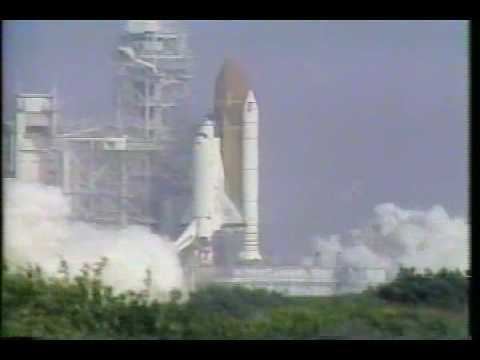Mission type Research SATCAT no. 21915 Period 1.5 hours Dates 24 Mar 1992 – 2 Apr 1992 Landing date 2 April 1992 | COSPAR ID 1992-015A Orbits completed 143 Apogee 294,000 m Launch date 24 March 1992 | |
 | ||
Mission duration 8 days, 22 hours, 9 minutes, 28 seconds Distance travelled 5,211,340 kilometers (3,238,180 mi) | ||
STS-45 was a 1992 Space Shuttle mission using the Space Shuttle Atlantis. Its almost nine-day scientific mission was with a non-deployable payload of instruments. It was the 46th Space Shuttle mission and the 11th for Atlantis.
Contents
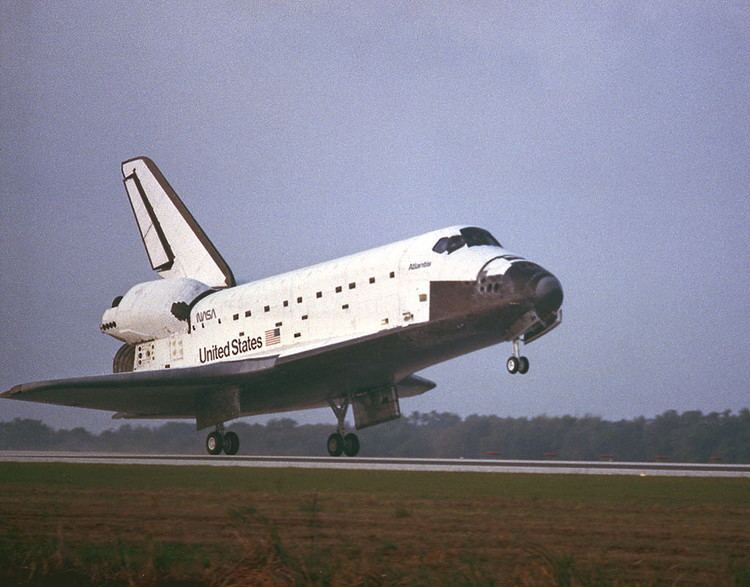
Mission highlights
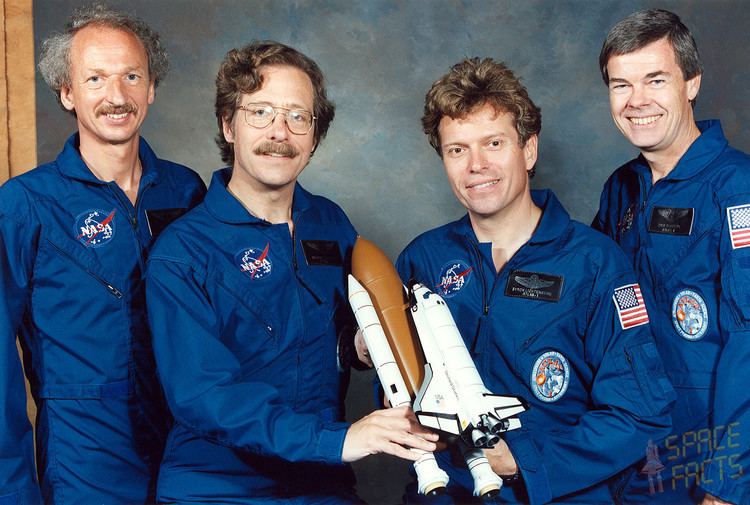
Atlantis was launched on 24 March 1992, at 8:13 am EST. The launch was originally scheduled for 23 March, but was delayed by one day because of higher-than-allowable concentrations of liquid hydrogen and liquid oxygen in the orbiter's aft compartment during tanking operations. During troubleshooting, the leaks could not be reproduced, leading engineers to believe that they were the result of plumbing in the main propulsion system not thermally conditioned to the cryogenic propellants; the launch was rescheduled for 24 March. Atlantis weighed 105,982 kilograms (233,650 lb) at launch.
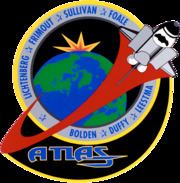
STS-45 carried the first Atmospheric Laboratory for Applications and Science (ATLAS-1) experiments, placed on Spacelab pallets mounted in the orbiter's payload bay. The non-deployable payload, equipped with 12 instruments from the United States, France, Germany, Belgium, Switzerland, the Netherlands and Japan, conducted studies in atmospheric chemistry, solar radiation, space plasma physics and ultraviolet astronomy. ATLAS-1 instruments included the Atmospheric Trace Molecule Spectroscopy (ATMOS); Grille Spectrometer; Millimeter Wave Atmospheric Sounder (MAS); Imaging Spectrometric Observatory (ISO); Atmospheric Lyman-Alpha Emissions (ALAE); Atmospheric Emissions Photometric Imager (AEPI); Space Experiments with Particle Accelerators (SEPAC); Active Cavity Radiometer (ACR); Measurement of Solar Constant (SOLCON); Solar Spectrum (SOLSPEC); Solar Ultraviolet Spectral Irradiance Monitor (SUSIM); and Far Ultraviolet Space Telescope (FAUST). Other payloads included the Shuttle Solar Backscatter Ultraviolet (SSBUV) experiment, a Get Away Special (GAS) experiment and six mid-deck experiments.
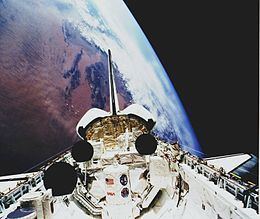
The mission was extended by a day in order to continue science experiments. The landing occurred on 2 April 1992, 6:23 am EST, on Runway 33 of the Shuttle Landing Facility, located at the Kennedy Space Center. The rollout distance was 2,812 metres (9,226 ft) and Atlantis weighed 93,005 kilograms (205,041 lb) on landing.
Stock Footage
Stock footage from the launch of this mission was used in the Chucklevision episode Kidnapped.
